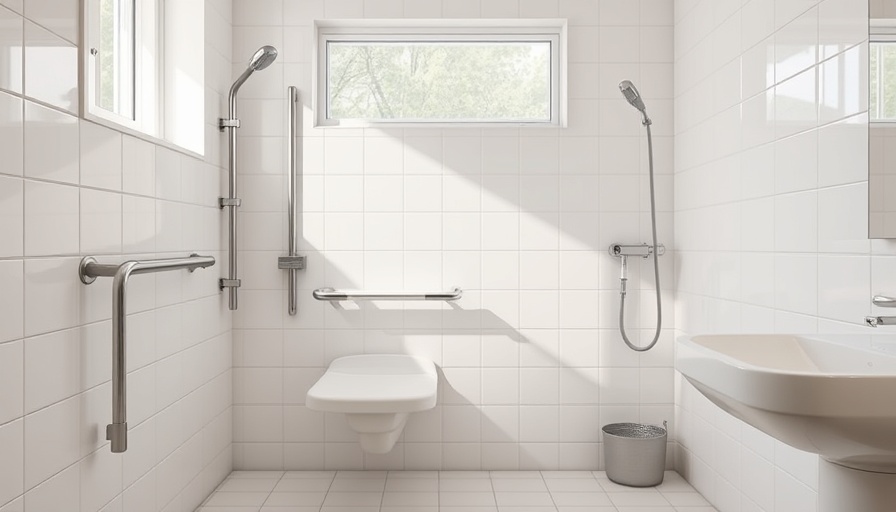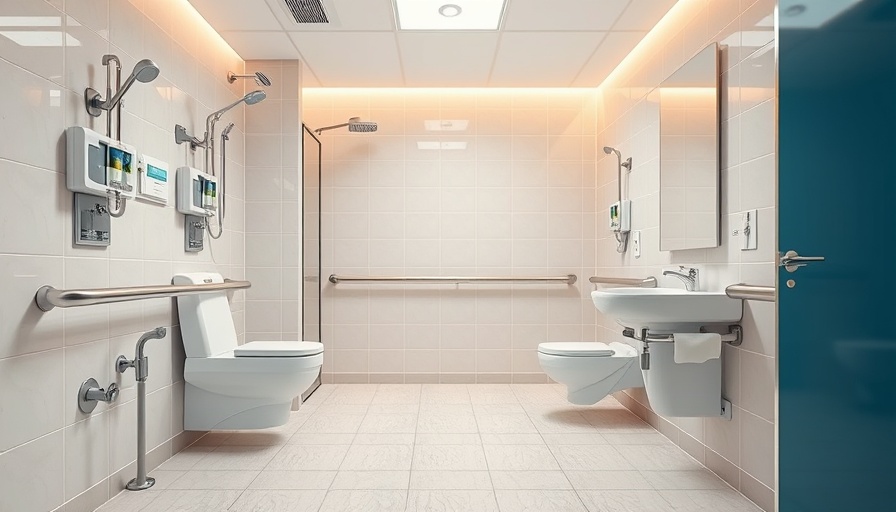
Understanding the Critical Importance of Bathroom Safety
As we navigate through life, our homes should ideally be havens of comfort and safety. However, one area that often presents unseen dangers is the bathroom. It’s no secret that this space can be particularly risky, especially for older adults, individuals with mobility challenges, and those recovering from surgery. In fact, the Centers for Disease Control and Prevention (CDC) highlights that falls occurring in bathrooms are a leading cause of injuries among seniors. Recognizing and addressing these risks is paramount in fostering independence and confidence for those who utilize these essential spaces daily.
Identifying Common Bathroom Hazards
Before introducing solutions for enhancing safety, we must first understand the common hazards that lurk in bathrooms. Wet floors, poor lighting, and ill-placed fixtures can transform this often serene space into a precarious one. Moreover, additions like slippery mats or clutter can become trip hazards, exacerbating the potential for falls.
The area around bathtubs or showers is particularly hazardous due to the inevitable wet conditions. Installing supportive fixtures such as grab bars can significantly mitigate these risks. The height of toilets and sinks can also pose challenges, especially for individuals with reduced mobility. Ergonomic modifications can create accessibility while ensuring safety. By pinpointing these hazards, occupational therapists can tailor safety plans that address specific client needs, fostering a more secure living environment.
Occupational Therapy Strategies for Bathroom Safety
Occupational therapists are instrumental in addressing bathroom safety through targeted strategies tailored to individual needs. One notable approach involves the integration of assistive devices into the bathroom design. These devices—ranging from grab bars and non-slip mats to shower chairs—provide critical support and stability, effectively reducing the risk of falls. Personalizing the selection and placement of these tools ensures they meet the unique requirements of each client.
Education also plays a vital role in promoting bathroom safety. Therapists often share valuable insights with clients regarding safe positioning techniques and methods for transitioning between bathtubs and toilets. This educational component not only enhances safety but also empowers individuals by fostering a greater understanding of their physical capabilities. Equipped with this knowledge, users are better prepared to navigate their bathrooms with confidence.
Future Trends in Bathroom Safety Innovations
Looking forward, it’s clear that the market for bathroom safety and accessibility solutions is evolving. Innovations in design are leading to smarter, more user-friendly assistive products that cater to an increasingly diverse population. For instance, intelligent toilet systems that facilitate easier access and motion-sensor lighting systems enhance safety without compromising aesthetics.
As technology continues to advance, we can anticipate even more responsive solutions that adapt to individual needs. These innovations have the potential to transform bathrooms from spaces fraught with hazards into user-friendly environments that prioritize independence, comfort, and safety for all users, especially within the demographic of older adults.
The Wellness Benefits of Prioritizing Bathroom Safety
Enhancing bathroom safety transcends mere accident prevention; it significantly contributes to overall mental well-being. By creating a secure environment, individuals are likely to experience heightened independence and confidence in performing daily activities. This sense of empowerment can lead to improved quality of life, minimization of anxiety surrounding falls, and an overall positive mental state.
Moreover, when family members observe their loved ones moving safely and confidently in the bathroom, the anxiety often surrounding caregiving circumstances is alleviated. Therefore, it becomes a joint endeavor benefitting not just the individuals directly affected, but also their support circles.
In closing, the importance of bathroom safety is profound and far-reaching. Engaging with occupational therapy can provide those who face mobility challenges the resources and insights needed to create a functional bathroom environment that is both safe and welcoming.
It’s essential to prioritize these modifications to ensure that bathrooms remain a haven of independence and comfort for everyone. If you're considering upgrades or adjustments to your bathroom, consult with an occupational therapist to guide you through the best practices and innovations available today! Be proactive; take the first step towards a safer, more secure bathroom.
 Add Row
Add Row  Add
Add 




Write A Comment